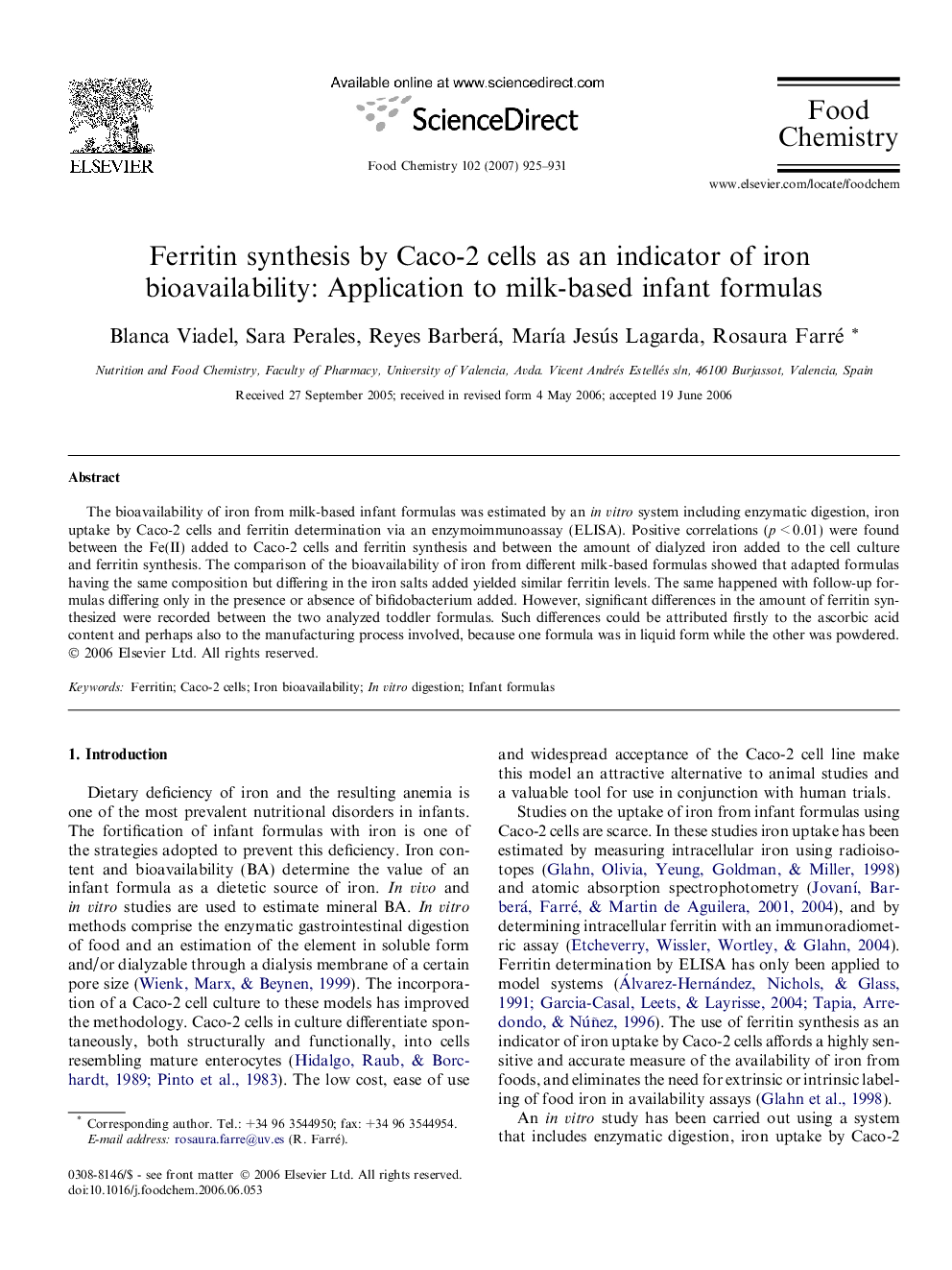| Article ID | Journal | Published Year | Pages | File Type |
|---|---|---|---|---|
| 1190073 | Food Chemistry | 2007 | 7 Pages |
The bioavailability of iron from milk-based infant formulas was estimated by an in vitro system including enzymatic digestion, iron uptake by Caco-2 cells and ferritin determination via an enzymoimmunoassay (ELISA). Positive correlations (p < 0.01) were found between the Fe(II) added to Caco-2 cells and ferritin synthesis and between the amount of dialyzed iron added to the cell culture and ferritin synthesis. The comparison of the bioavailability of iron from different milk-based formulas showed that adapted formulas having the same composition but differing in the iron salts added yielded similar ferritin levels. The same happened with follow-up formulas differing only in the presence or absence of bifidobacterium added. However, significant differences in the amount of ferritin synthesized were recorded between the two analyzed toddler formulas. Such differences could be attributed firstly to the ascorbic acid content and perhaps also to the manufacturing process involved, because one formula was in liquid form while the other was powdered.
